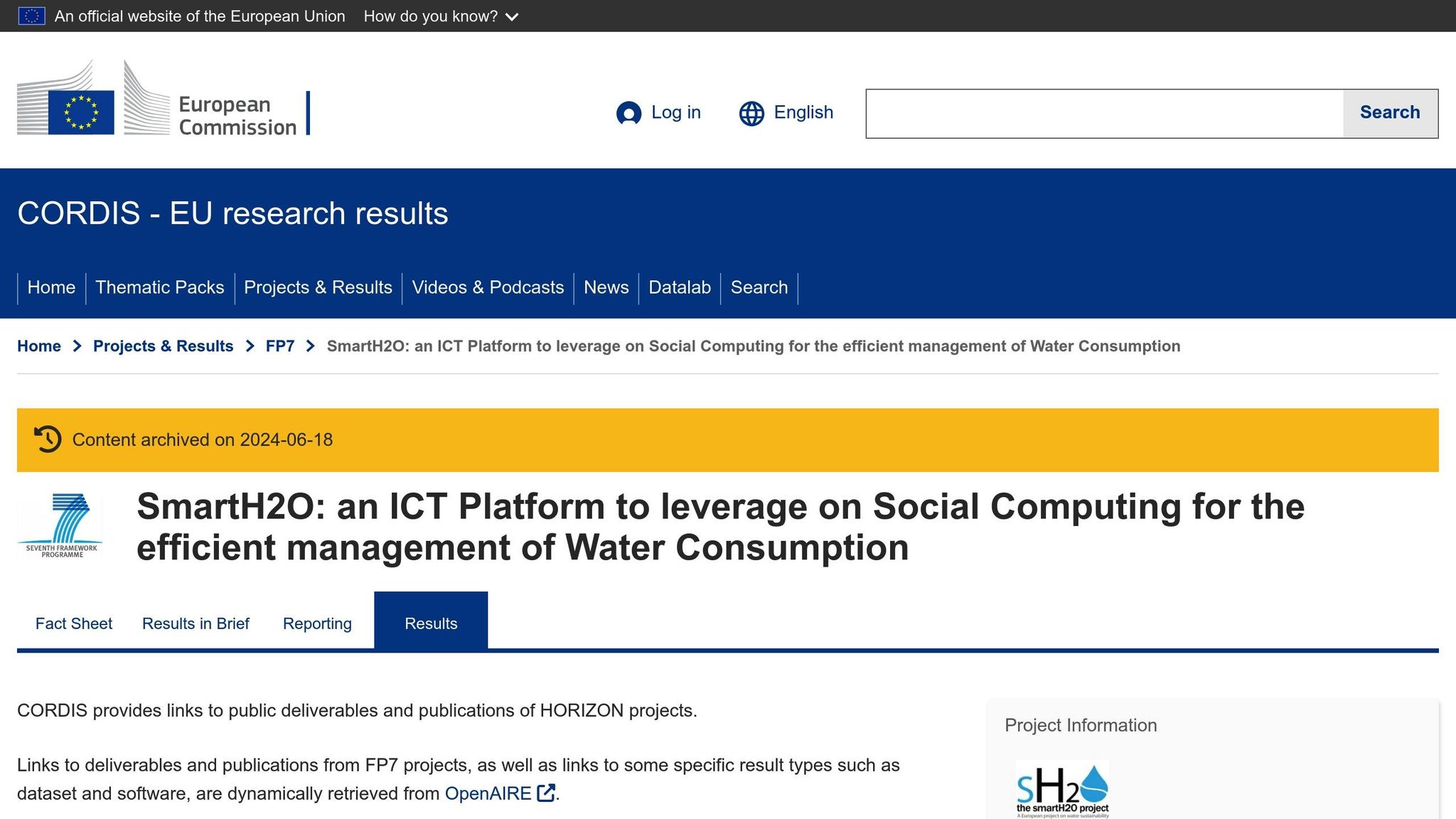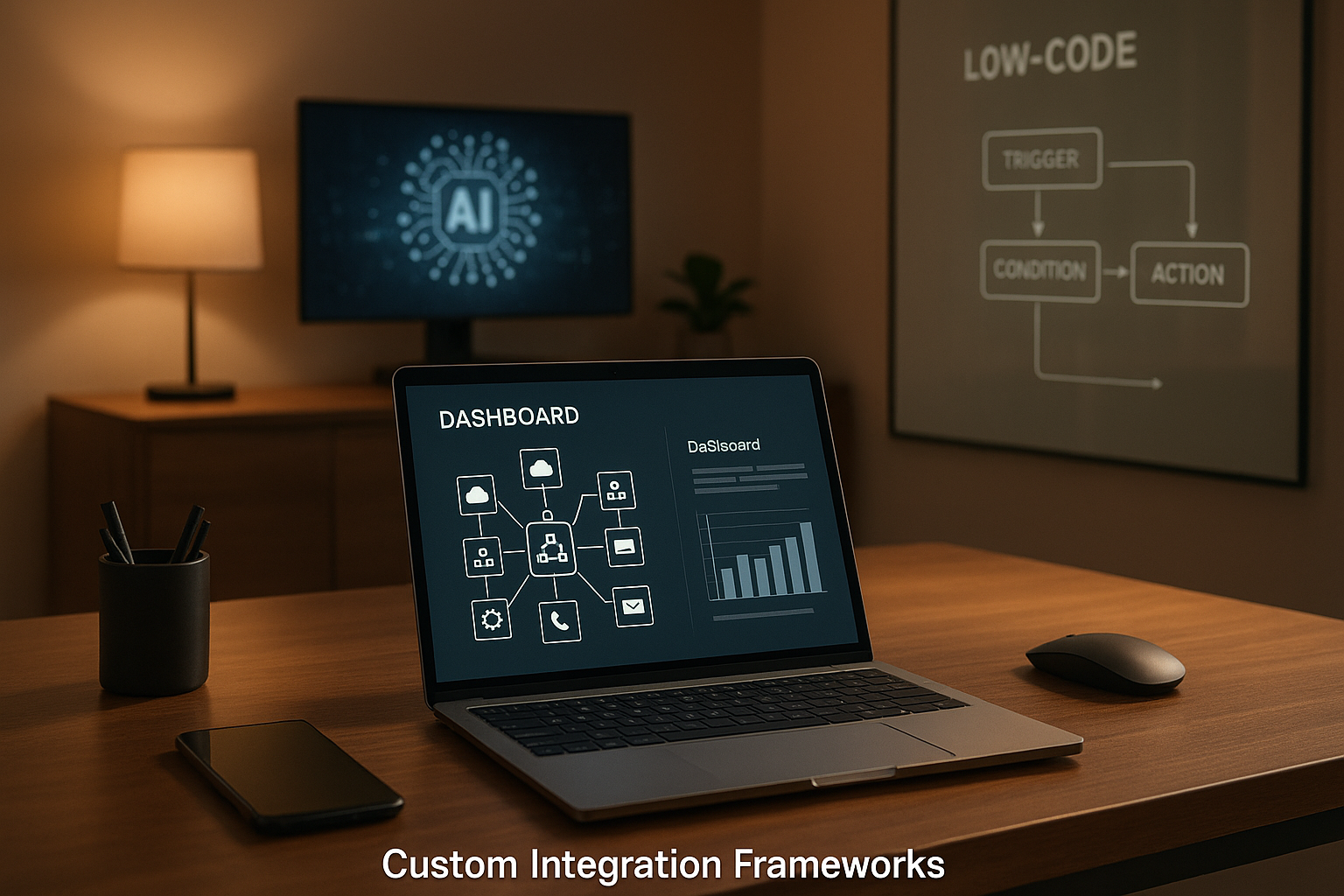Incentive models are powerful tools for encouraging participation, whether from customers, employees, or communities. They work by aligning rewards with specific behaviors, turning passive individuals into active contributors. This article explores three real-world examples of incentive strategies:
- Fixed Cash Rewards: Direct monetary incentives, like Facebook’s 2008 app developer program, tied rewards to engagement metrics, improving app quality and user retention.
- Gamification & Social Rewards: SmartH2O used gamified features and social recognition to promote water conservation, achieving up to 20% reductions in usage.
- Lottery & Charity Incentives: Lotteries sparked action through social pressure and regret avoidance, while charity-based incentives appealed to professionals restricted from accepting direct rewards.
Each model has its strengths and weaknesses, from immediate impact to long-term engagement. The key is selecting the right approach based on your audience's motivations and your goals.
Wells Fargo’s $300 incentive: A mistake you can learn from

Quick Comparison
| Incentive Model | Engagement Impact | Cost | Scalability | User Satisfaction | Complexity |
|---|---|---|---|---|---|
| Fixed Monetary Rewards | High (short-term) | High | Limited | Variable | Low |
| Gamification | Consistent | Moderate | High | High | Moderate |
| Lottery Incentives | Moderate | Low-Moderate | High | Low-Moderate | Low |
| Charity-Based Incentives | Moderate | Variable | High | Moderate-High | Low |
Understanding your audience and objectives is critical to designing an effective incentive program. Each model offers unique ways to drive participation, whether through direct rewards, social engagement, or purpose-driven initiatives.
Case Study 1: Fixed Performance-Based Incentives for User Engagement
Facebook's application platform is a great example of how fixed, performance-based incentives can drive user engagement. In February 2008, the social media giant introduced a change that turned notification privileges into a valuable tool for app developers.
How the Fixed Incentive Model Worked
Facebook restructured its notification system to encourage quality over quantity. Before February 2008, every application on the platform had the same notification privileges, allowing them to send an equal number of notifications to users. While this approach seemed fair, it also opened the door for low-quality apps to bombard users with spam.
To fix this, Facebook tied notification privileges to user engagement. After the change, the number of notifications an app could send depended on how often users interacted with them. Apps with higher click-through rates earned more notification opportunities, while those with lower engagement saw their reach limited.
This shift gave developers a clear incentive: better engagement meant more notifications, which could lead to higher revenue and improved app performance. For developers, these notification rights became a valuable asset, directly tied to their app's success.
By May 2008 - just a year after the platform's launch - over 30,000 applications had been developed, with more than 900 million installations in total. The new incentive model played a big role in helping quality apps stand out.
Results and Performance Metrics
The results made the impact of the new system clear. Apps launched after the seventh week of 2008 showed an average quality rating improvement of 0.4 points compared to those released before the change. User ratings became a key factor in determining an app's success, while simply having a large network mattered less. Developers also realized that frequent updates were crucial for maintaining notification privileges and keeping users engaged. Overall, user retention improved compared to the period before the change.
While the new model didn't block new developers from entering the platform, it made it harder for low-quality apps to attract and retain engaged users. This ensured that quality became the most important factor for success.
Key Lessons
Facebook's experience highlights some important lessons for businesses looking to use fixed incentives effectively. One takeaway is that "soft" incentives, like notification privileges, can improve platform quality without completely excluding weaker apps. Instead of banning low-performing applications, Facebook created an environment where quality naturally rose to the top.
The success of this model came from aligning rewards with desired behaviors. By linking notification privileges to click-through rates, Facebook encouraged developers to focus on user engagement. Timing also played a key role - Facebook implemented the change when it had enough scale and data to make performance-based decisions. For companies considering similar strategies, having a solid foundation of metrics and user data is essential.
Another important factor was the immediacy of the rewards. Notification privileges weren’t abstract or delayed; they had a direct impact on a developer's ability to engage users and generate revenue. This clear connection between performance and reward motivated developers to consistently improve the quality of their apps.
Case Study 2: Gamification and Social Rewards at SmartH2O

SmartH2O took a creative approach to influencing consumer behavior by using gamification and social rewards. Instead of relying on fixed monetary incentives, this European initiative combined smart water meters with an engaging digital platform to inspire households to cut down on water usage. The platform introduced game-like features and a sense of social competition to make water conservation more interactive and appealing.
Gamified Elements and Social Incentives
The SmartH2O platform turned water conservation into an engaging experience by connecting directly to users' smart meters and operating as a rewards-based marketplace. Users could set specific water-saving goals - like reducing usage by 5%, 10%, or 15% - and earn redeemable points, virtual badges, and spots on leaderboards. These features blended personal satisfaction with tangible rewards, encouraging both individual and community participation. Social recognition and friendly competition were key drivers, as users could see how their efforts stacked up against others.
For those seeking a more advanced experience, the platform also offered enhanced data visualization tools alongside these gamified elements, creating a highly interactive environment. This combination of features proved to be effective in promoting measurable reductions in water use.
SmartH2O Platform Results
The pilot programs for SmartH2O delivered impressive results, showcasing how gamification paired with real-time consumption data could influence behavior. Trials conducted in Terre di Pedemonte, Switzerland, and Valencia, Spain, highlighted the platform's potential. Swiss households achieved an average water savings of 10%, while households in Spain managed an even greater reduction of 20%.
In Valencia, the most detailed study ran from June 2016 to February 2017 and involved 334 households. Participants accessed a comprehensive digital platform that allowed them to visualize smart meter data, compare their usage with peers, set water-saving goals, and engage in gamified activities. By the end of the program, 47% of households maintained an 8% reduction in water usage, and these habits persisted even two years later. Engagement levels were notably higher among users of the gamified portal compared to those using a basic version, further validating the effectiveness of the approach.
Gamification Lessons
SmartH2O provides valuable takeaways for companies looking to implement gamification strategies. Its success came from integrating multiple motivational tools - virtual points, physical rewards, and social recognition - rather than relying on a single method. The platform's real-time feedback allowed users to see the immediate impact of their efforts, which kept them motivated. By offering clear and achievable goals, such as water-saving targets of 5%, 10%, or 15%, the program catered to a wide range of user capabilities. Social features like leaderboards and peer comparisons added another layer of motivation, creating a sense of community support and friendly rivalry.
However, the initiative also revealed some challenges. A robust technical setup was essential, requiring smart meters and real-time data processing. This meant businesses needed to carefully assess the initial investment against the potential long-term benefits. Personalization and user research were also critical, as evidenced by the development of both basic and gamified portal versions to suit different preferences.
Overall, SmartH2O demonstrates that a well-thought-out gamification strategy - balancing intrinsic motivation with external rewards - can lead to lasting behavioral changes and deliver meaningful outcomes for both users and organizations.
sbb-itb-97f6a47
Case Study 3: Lottery and Charity-Based Incentive Programs
Some organizations take a different route to encourage participation by tapping into unique psychological motivators. These approaches serve as alternatives to the fixed and gamified methods discussed earlier.
How Lottery and Charity Incentives Work
Lottery incentives revolve around the allure of potential rewards. Instead of guaranteeing a reward for every participant, a prize pool is created, and only a select few receive the reward. For example, the Center for Health Incentives and Behavioral Economics tested this method in a workplace wellness program. Employees were grouped into teams, and one randomly selected team received rewards if all members completed their Health Risk Assessment (HRA). This lottery approach achieved a 64% completion rate, compared to 44% for gift certificates and 40% for cash incentives.
The success of lottery systems hinges on two key factors: regret avoidance and social pressure. Participants are motivated by the fear of missing out if their team wins and they haven’t completed the required task, making this method particularly effective.
Charity-based incentives, on the other hand, appeal to participants by aligning their actions with meaningful causes. These programs have grown in popularity, with charitable giving increasing by 118% between 2020 and 2021. Organizations like REA Group have used this approach effectively, especially in situations where direct compensation isn’t suitable. Benson Low, head of UX research at REA Group, explains:
"When talking to professionals in the industry, we don't incentivize the participant. Instead, we get them to donate their incentive to a charity. Within their organization, they can't accept gifts, but they want us to incentivize their time."
Performance Comparison
The effectiveness of lottery and charity incentives depends on the context and the audience. Lottery systems tend to perform well with lower-income participants and are particularly effective for one-time actions rather than ongoing tasks. For instance, a study in Harare, Zimbabwe, showed that offering lottery prizes of $5 or $10 led to a 40% uptake in HIV testing, compared to 20% in the control group. However, fixed incentives slightly outperformed lotteries, achieving a 48% uptake rate.
Charity-based incentives, while less focused on immediate results, often lead to stronger long-term benefits like brand loyalty. Research indicates that 37% of consumers remain loyal to brands that support shared causes, and 72% recommend businesses they perceive as socially responsible. The Giving Multiplier platform is a great example of this approach, raising over $1.5 million from 3,450 donations between November 2020 and December 2021. Of these contributions, 73% went to highly effective, expert-recommended charities.
Cultural preferences also play a role. In the U.S., both lottery and charity incentives resonate, but charity options are particularly appealing to C-suite executives, government employees, and healthcare workers who may face restrictions on accepting direct compensation. While only 17% of market researchers currently offer charity-based incentives, 36% plan to introduce this option in the next two years.
Implementation Best Practices
For lottery programs, the design is critical. Team-based participation can amplify social pressure and regret avoidance, motivating individuals to complete required actions. Clear communication about eligibility, prize details, and drawing schedules is essential to build trust and engagement. Avoid overly restrictive eligibility rules, as they can discourage participation.
Charity-based incentives are most effective when they focus on specific causes. Research shows that limiting choices to two or three charities works better than offering an open-ended selection. This reduces decision fatigue and ensures donations align with the organization’s values. Holly Cole, director of ReOps, highlights the practicality of this approach:
"For a long time the default has been to give somebody a gift card to thank them for participating in research. But there are so many times when that just doesn't make sense. That's why we're seeing so much interest in charity options."
Both approaches benefit from transparency. For lotteries, explain how winners are chosen and what prizes are available. For charity programs, share updates on total donations and their impact to create a sense of collective achievement.
Technology can streamline these processes. Automated systems can manage lottery drawings, notify winners, and process charity donations. They can also provide real-time updates on participation rates and contributions, keeping participants engaged while reducing administrative workload.
The key to success lies in tailoring the incentive to the audience and goals. Lottery systems are ideal for one-time actions and cost-conscious organizations, while charity incentives shine when targeting professionals restricted from accepting direct rewards or audiences motivated by social causes. Together, these models offer versatile tools for driving engagement and participation.
Incentive Model Comparison: Pros and Cons
After analyzing the case studies, it’s time to compare the incentive models and weigh their trade-offs. Each model has its own strengths and challenges, and understanding these differences is key to selecting the best approach for your goals.
Incentive Models Comparison Table
| Incentive Model | Engagement Impact | Cost | Scalability | User Satisfaction | Implementation Complexity |
|---|---|---|---|---|---|
| Fixed Monetary | Short-term boost | High | Limited | Variable | Low |
| Gamification/Social | Long-term, consistent | Moderate | High | High | Moderate |
| Lottery | Low | Low to Moderate | High | Low to Moderate | Low |
| Charity-Based | Moderate | Variable | High | Moderate to High | Low |
This table provides a snapshot of the considerations organizations should weigh as they choose the right model for their objectives.
Fixed monetary incentives are straightforward but can quickly become expensive, particularly when linked to hourly wages.
Gamification and social rewards emerge as the most well-rounded option. Companies using gamification strategies have reported a 50% increase in brand engagement and a 36% boost in customer retention. These models also improve workplace metrics, including a 48% rise in employee engagement, 34% better sales performance, and 50% lower turnover rates.
Lottery-based incentives are cost-effective and easy to scale but show limited effectiveness. Studies reveal that lottery incentives often fail to significantly improve participation rates compared to no incentives at all and are less effective than guaranteed fixed payments.
Charity-based models strike a balance, offering moderate engagement while addressing ethical concerns tied to direct payments. They scale well and can create positive associations for your brand, though their success largely depends on how closely the cause aligns with your audience’s values.
How to Choose the Right Incentive Model
Here are some guidelines for selecting the most appropriate incentive model based on your objectives:
- Fixed Monetary Rewards: These are ideal for short-term campaigns where immediate action is needed, such as completing surveys or trying out products. However, beware of diminishing returns due to habituation, as repeated exposure can reduce their effectiveness over time.
- Gamification Models: Perfect for fostering long-term engagement and behavior change. These work well in loyalty programs, employee training, and educational platforms - essentially, any scenario where building habits is a priority. Gamification stands out because it taps into intrinsic motivation, making tasks feel meaningful, unlike fixed rewards that rely solely on external incentives.
- Lottery Systems: While budget-friendly and scalable, lottery incentives should be used cautiously. They may work for one-off actions, but research consistently shows they’re less effective than guaranteed rewards. If budget constraints make fixed rewards unfeasible, lotteries can still drive participation, but it’s important to set realistic expectations.
- Charity-Based Incentives: These are a strong choice for professional audiences, such as executives, healthcare workers, or government employees, who might face restrictions on direct compensation. They also appeal to socially conscious participants, enhancing brand reputation while encouraging involvement.
It’s important to avoid setting incentives so high that they attract participants purely for monetary gain. Overly large rewards can also raise ethical concerns, as they may pressure individuals into participation, undermining the principle of voluntary involvement. Striking the right balance between fair compensation and task-related performance rewards is essential.
Ultimately, the best model depends on your audience’s motivations and what your organization can support. For tailored advice, consider consulting firms that specialize in behavioral economics and engagement strategies. Resources like the Top Consulting Firms Directory can connect you with experts in areas like digital transformation and strategic management.
Conclusion: Lessons for Better User Participation
The case studies highlight an important truth: successful incentive programs effectively align rewards with both business objectives and user values. By recognizing these patterns, organizations can craft engagement strategies that encourage consistent and meaningful participation.
Main Takeaways
- Align incentives with business goals and user values. This ensures that the behaviors being encouraged support long-term objectives, avoiding the trap of rewards that drive unproductive or short-term actions.
- Adapt programs to changing needs. Incentive plans should evolve as business priorities and user preferences shift. Regular reviews - ideally on a quarterly basis - help keep these programs relevant and impactful.
- Keep reward structures simple and transparent. Users are more likely to stay engaged when they clearly understand how their efforts translate into rewards and can easily track their progress.
- Blend monetary and non-monetary rewards. Offering a mix of tangible and intangible incentives boosts user satisfaction and engagement. Research shows that effective plans can increase productivity by 25 to 44%.
- Know your audience. Different groups respond to different motivators. For example, multi-generational workforces benefit from diverse reward systems tailored to their unique preferences, often at surprisingly low costs.
- Prioritize sustainable engagement. The best programs reward both the journey and the destination, fostering long-term behavioral changes rather than short-lived bursts of activity. Recognizing effort alongside outcomes helps build deeper connections.
Companies with well-structured incentive plans see up to 31% lower voluntary turnover rates - but only when these plans are regularly reviewed and fine-tuned.
Getting Expert Help with Incentive Design
While these lessons provide a solid foundation, refining an incentive program often requires specialized expertise. Modern incentive strategies - incorporating generational preferences, advanced technology, and behavioral insights - can be complex. External consultants bring a wealth of experience from various industries, helping to avoid pitfalls like misaligned goals, inequitable rewards, or unintended consequences.
Consultants offer an objective perspective and the expertise needed to design programs tailored to your organization’s unique needs. Their guidance becomes especially valuable for enterprise-level initiatives that require sophisticated tracking and data analysis.
For those exploring professional support, resources like the Top Consulting Firms Directory can connect you with experts in digital transformation, strategic management, and behavioral economics. These professionals can help design custom programs that align with your goals while minimizing risks.
Investing in expert guidance often pays off. As Greg Stoskopf, Managing Director and National Compensation Strategies Practice Leader at Deloitte, emphasizes:
"A well-designed, well-communicated incentive plan should be a win-win for the employee and the company".
FAQs
How can businesses choose the right incentive model to engage their audience and achieve their goals?
To choose the right incentive model, the first step is figuring out what drives your audience. Tools like A/B testing, surveys, and direct feedback can help uncover these motivations. It’s equally important to define your goals upfront - whether that’s boosting user engagement, increasing purchases, or driving referrals.
Once you’ve nailed down your audience’s preferences and your objectives, match your incentives to the specific behaviors you want to promote. Keep an eye on metrics like engagement rates, ROI, and progress toward your goals. Use this data to fine-tune your incentive strategy over time, ensuring it delivers the best results.
What are the long-term pros and cons of using gamification as an incentive strategy?
Gamification has the potential to bring lasting advantages by sparking engagement, enhancing knowledge retention, encouraging collaboration, and driving motivation. By making tasks more enjoyable, it often inspires people to stay involved consistently over time.
That said, there are some challenges to watch out for. It can sometimes create unhealthy competition, increase stress levels, or even lead to burnout. There's also the risk of reducing intrinsic motivation if participants become too focused on earning rewards. On top of that, poorly designed systems can be misused, resulting in cheating or other unintended outcomes.
With careful planning and attention to detail, gamification can be an effective approach. Striking the right balance between fun and fairness, while prioritizing participants' well-being, is key to its success.
How do charity-based incentives compare to cash rewards in building brand loyalty and engagement?
Charity-based incentives tap into customers' personal values, creating emotional connections that can strengthen brand loyalty. These programs often inspire a sense of purpose and belonging, encouraging more meaningful and lasting engagement.
On the other hand, cash rewards offer instant gratification, making them effective for driving short-term participation. However, they might not cultivate the same enduring emotional bonds. While both strategies can work, charity-based incentives tend to resonate more with individuals who value making a positive social impact.


